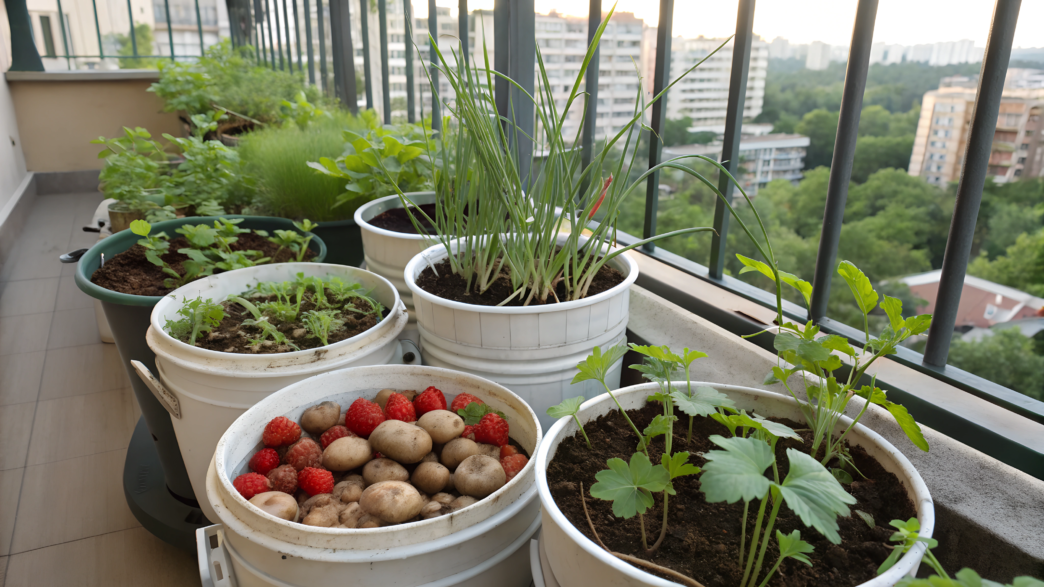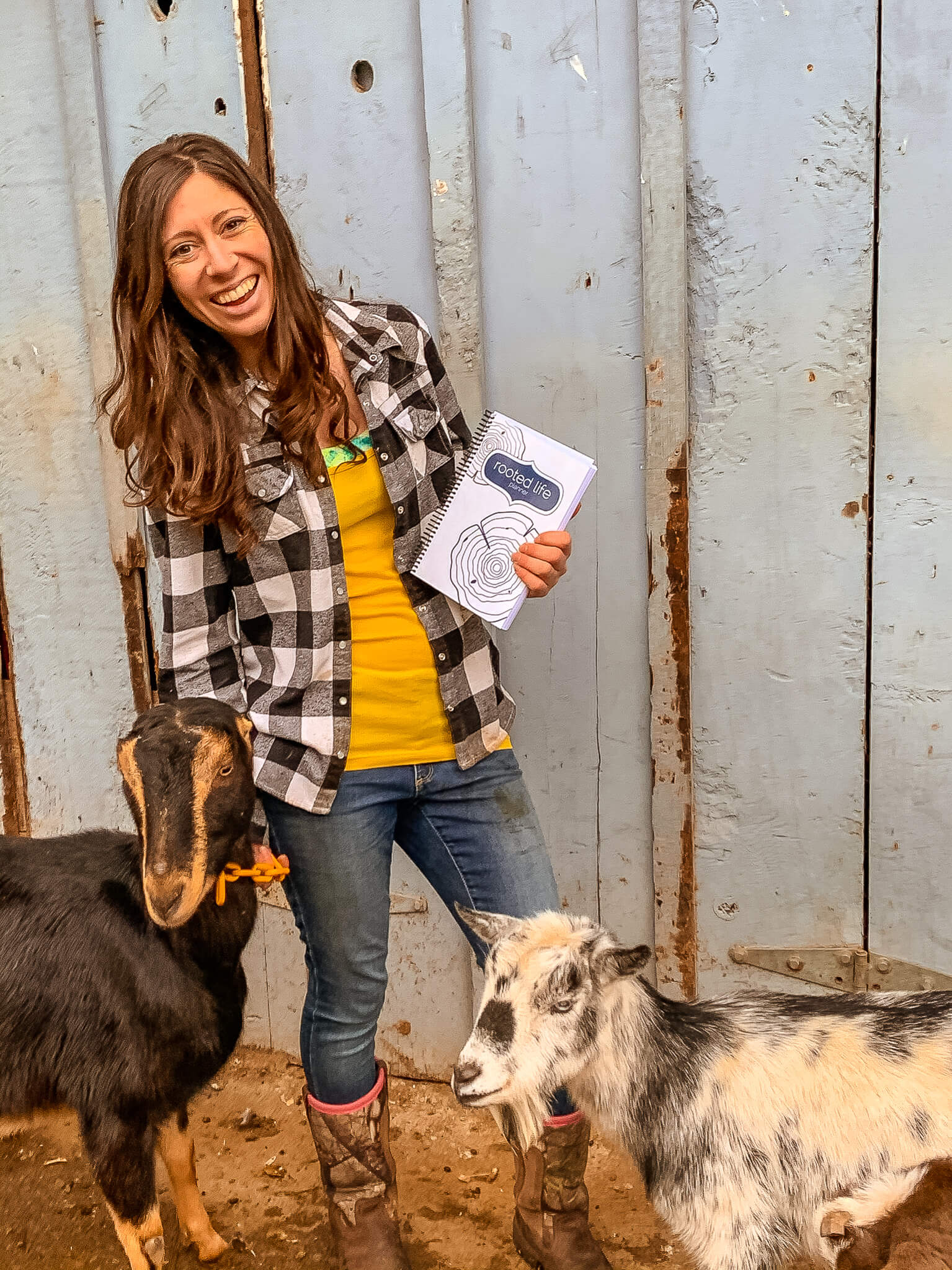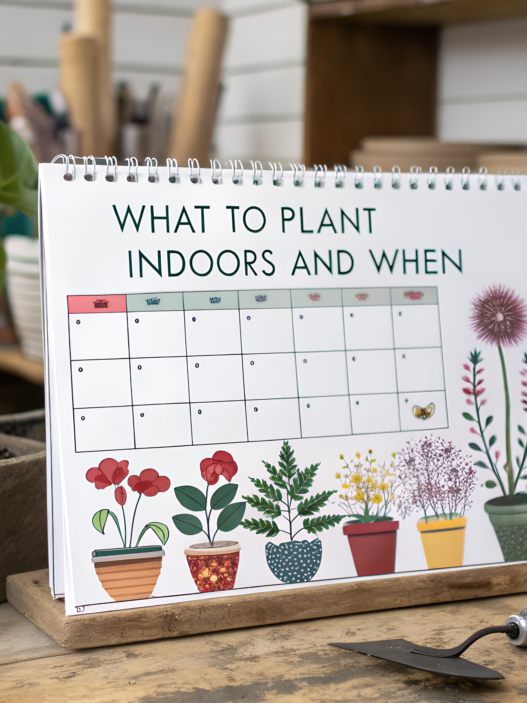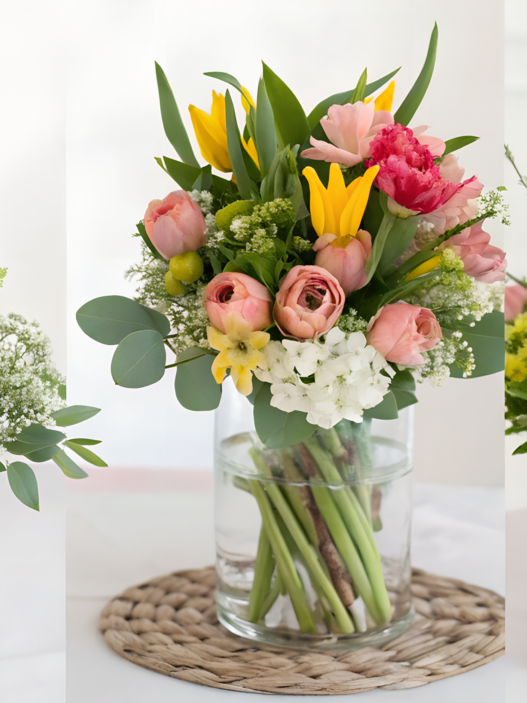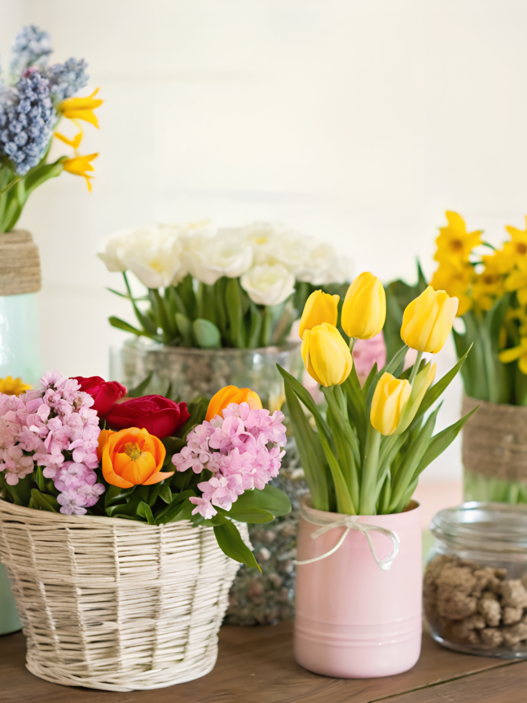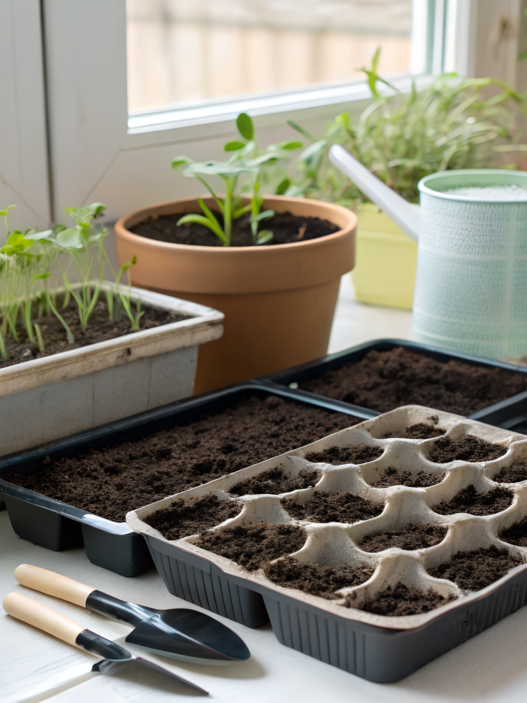Sure, you’d like your plot to be big, but limited space is no reason to give up gardening. You can even grow vegetables, fruits and herbs in buckets. And not just grow, and get stable yields. And we can make sure of it by familiarizing ourselves with 15 unusual crops you can grow in buckets, and step-by-step how to do it right.
How to Grow Corn in a Bucket: A Step-by-Step Guide
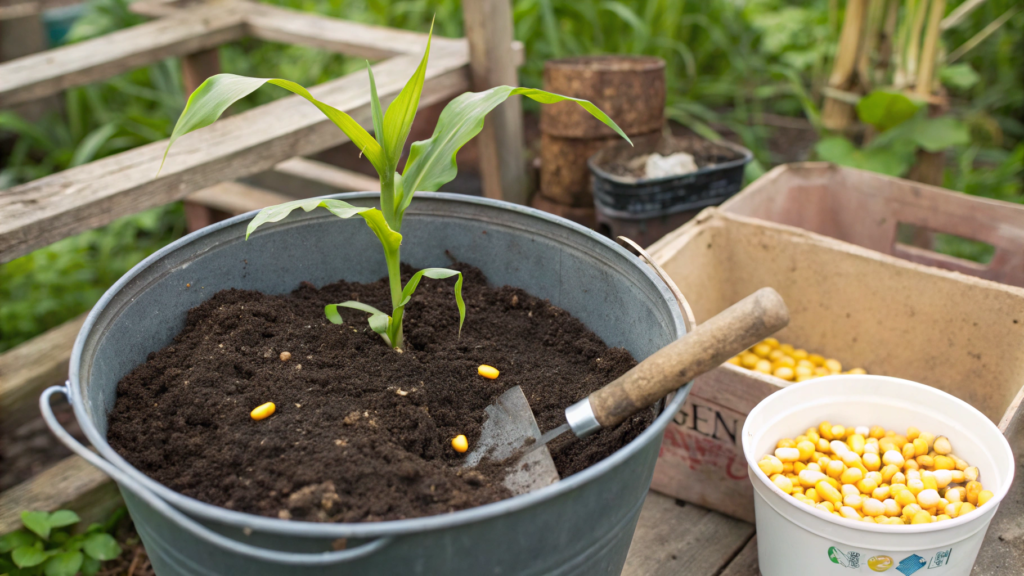
Yes, yes corn in a bucket! Many people think it needs a lot of soil, but it actually grows just fine in containers. The key here is to choose the right volume and the right variety.
What you will need:
- A bucket from 20 liters (5+ gallons) – better 30 liters if you have space.
- Drainage holes + a layer of gravel or expanded clay (needed for water drainage)
- Corn seeds (dwarf or sugar varieties are best, such as Golden Bantam).
- Quality soil mixture rich in compost.
- Supports – corn can reach 1-1,5 meters, it needs support.
Instructions:
- Make drainage holes in the bottom of the bucket.
- At the bottom, pour 3-5 cm of expanded clay or gravel to avoid stagnant water.
- Fill the bucket with soil, leaving 2-3 cm to the edge.
- Plant 3-4 seeds in the center (about 2 cm deep).
- Water regularly, but don’t flood as corn likes moisture, but without stagnant water.
- When sprouts appear, leave 1-2 of the strongest, remove the rest.
- After 3 weeks, feed with a fertilizer with nitrogen (for example, compost tea).
- If necessary, put a support if the stem starts to lean.
If you want good results, try quality sugar corn seeds on Amazon.
Grow Potatoes and Sweet Potatoes Year-Round in Buckets
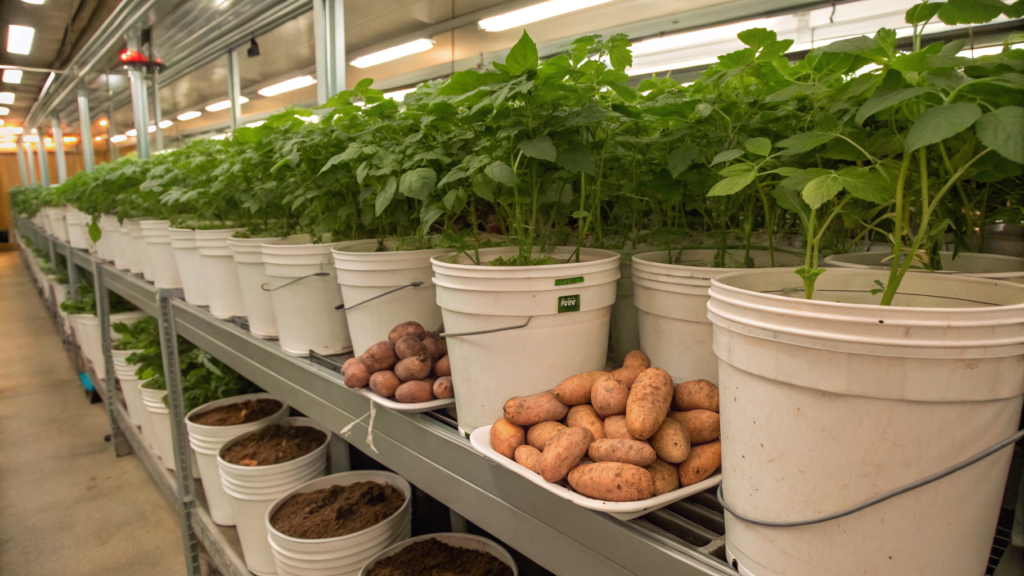
Potatoes and yams also grow beautifully in buckets. You can grow them all year round and you don’t even have to dig the beds. That way, you have complete control over the process and can even harvest several times a year.
What you’ll need.
- Choose the right bucket – at least 20 liters for potatoes and 30 liters for yams.
- Loose soil with sand and compost – too dense soil will lead to rotting.
- Potato tubers or yam cuttings.
How to plant potatoes:
- Drill drainage holes in the bucket .
- Pour 3-5 cm of drainage (expanded clay, gravel or wood chips).
- Fill the bucket with 10 cm of soil and place 3-5 tubers.
- Add another 10-15 cm of soil, moisten.
- When the shoots rise to 15-20 cm, replenish the soil, leaving only the tops.
- Water regularly, but without excessive water.
- After 3-4 months, harvest the crop.
How to grow yams:
Use cuttings, not tubers – yams propagate differently than potatoes.
Plant in loose soil, leaving 2-3 main shoots.
Water moderately, without stagnant water.
After 4-5 months, the yams can be dug up.
Exotic Herbs You Can Grow in 10-Gallon Buckets at Home
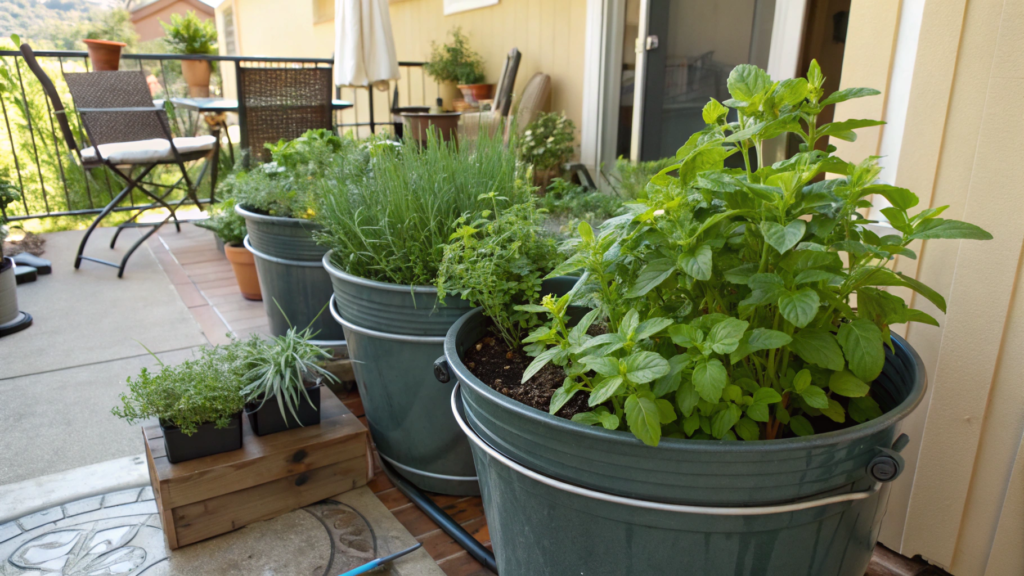
Regular herbs are great, but exotic herbs add a new level of flavor to your dishes. And growing them in buckets so they’re always on hand is a good idea.
Best exotic herbs for buckets:
- Lemon grass – it’s very flavorful, unpretentious.
- Kaffir lime – its leaves are used in Thai cuisine.
- Curry leaf – it is the basis of Indian dishes.
- Galangal – a relative of ginger, but with a milder flavor.
- Wasabi – yes, real Japanese horseradish can be grown at home!
How to grow herbs in buckets:
- Choose a bucket from 10 liters, with drainage holes.
- 3-5 cm of expanded clay or gravel at the bottom.
- Use light soil with sand and compost added.
- Water only when the soil on top is dry – herbs do not like overwatering.
- Feed once a month with compost tea.
- Keep in a warm place – bring it inside if necessary.
Try growing your own set of exotic herbs for the kitchen.
Fruits You Can Harvest from a Simple Bucket Setup
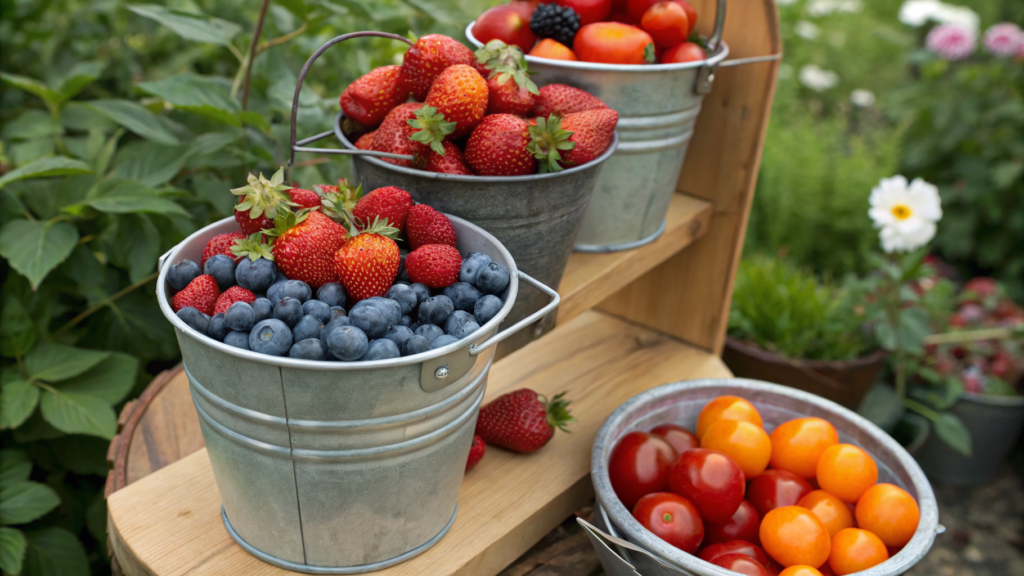
You can grow fruit in buckets too. The key is to choose dwarf varieties that feel great in containers and produce a full crop.
The best fruits for buckets:
- Figs – can be grown even indoors.
- Lemon, lime, tangerine – love drainage and sun.
- Pomegranate – adapts well to small containers.
- Blueberry (berry) – grows well in containers if the soil is acidic.
- Raspberry (berry) – dwarf varieties give a stable harvest.
How to plant a fruit tree in a bucket:
- Choose a container for at least 30 liters, as fruit has a powerful root system.
- Don’t forget to drill drainage holes.
- Add 5 cm of drainage. You can use crushed stone, expanded clay.
- Fill the bucket with quality soil, better with the addition of compost. Leave 3-5 cm to the edge.
- Water only when the top layer dries up, because fruits do not like excess moisture.
- Bring indoors in winter if the variety is heat-loving.
How to Grow Strawberries in Vertical Bucket Towers
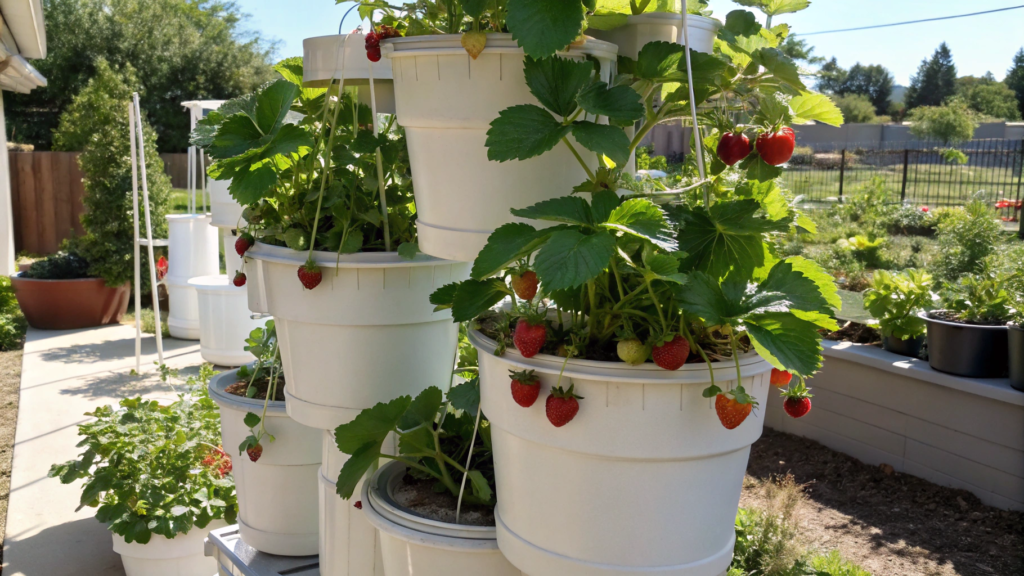
If space is tight, a vertical bucket towers for growing strawberries is a practical solution.
How to make a bucket tower for strawberries:
- Take a bucket from 20 liters, make holes on the sides.
- Make drainage holes at the bottom – without them, the water will stagnate.
- Fill with soil, starting from the bottom small layer.
- Then add strawberry seedlings through the side holes and continue to fill with soil, alternating layers of soil and plants.
- You can plant 2-3 more strawberry bushes in the top of the bucket.
- Water from the top, the water will be distributed downward, moistening all the roots evenly.
- Fertilize every 3 weeks with organic matter.
So you can grow up to 10 bushes on one bucket. What a space saver!
You have seen for yourself that vertical strawberry towers are really convenient. Seedlings of strawberries “Albion” are perfectly suitable for growing in containers.
Easy Bucket Gardening Ideas for Root Vegetables
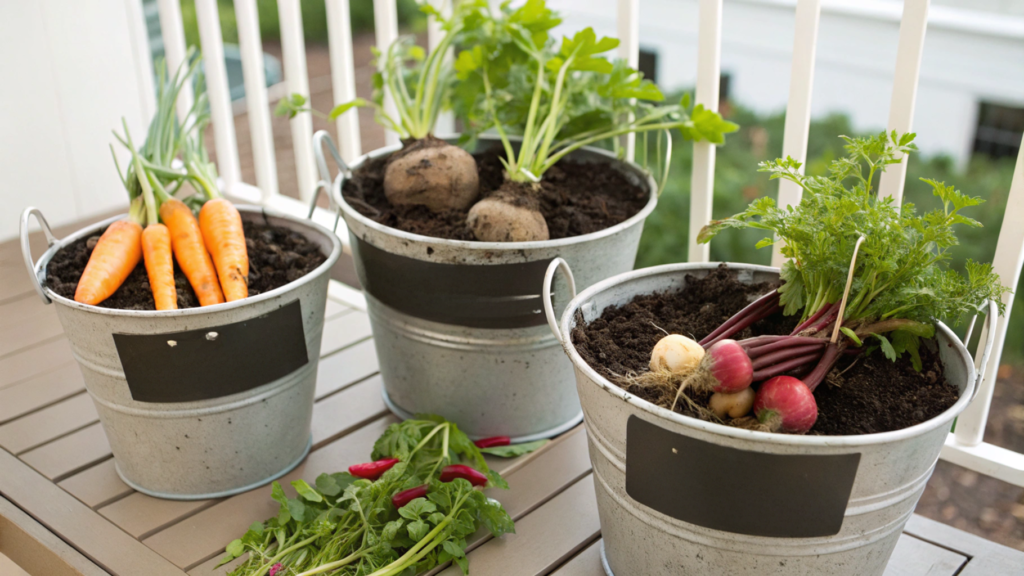
Root veggies in buckets is not only real, it’s damn convenient. You don’t have to dig long beds and fight weeds. They do require good drainage, proper depth and quality soil.
What root vegetables grow best in buckets?
- Carrots – short-fleshed varieties are best, such as ‘Parisian‘.
- Beets – can be planted tighter (Detroit Dark Red is a classic, sweet flavor)
- Radishes – grows in 25-30 days (French Breakfast – elongated, slightly spicy roots. Daikon – white, Japanese radish, grows in cooler temperatures)
- Turnip – does not like overwatering (Purple Top White Globe – classic turnip, juicy and tender).
How to plant root crops in buckets?
What will you need?
- A bucket 25-40 cm deep, depending on the crop.
- Drainage holes + 5 cm of gravel.
- Light, loose soil – heavy soil is not suitable.
- Plant the seeds, lightly covering with soil.
- Put buckets in a sunny place, but not on hot concrete – the roots will overheat.
- Water moderately, especially during the formation of roots.
A common mistake of beginners is too dense planting. If carrots or beets grow closely, they will not form large root crops.
Carrots are harvested in 60-80 days, beets – 50-70 days, radishes – 25-30 days, turnips – 50-60 days.
The Surprising Benefits of Growing Dwarf Fruit Trees in Buckets
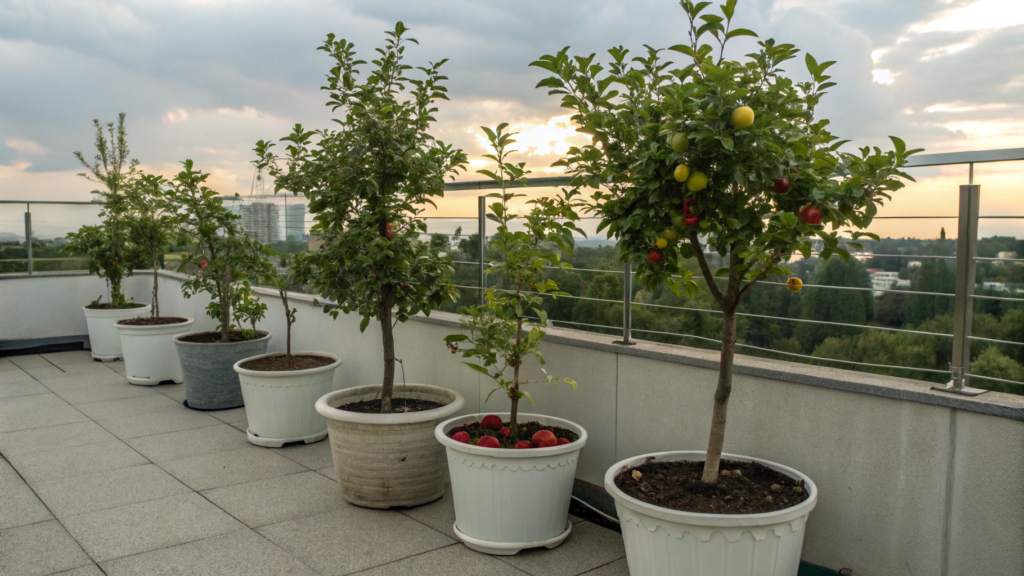
Dwarf trees produce a full crop and can live in a bucket for up to 10 years.
The best dwarf trees for buckets:
- Apples – Ballerina, Pixie Crunch varieties.
- Cherries – compact varieties like ‘Carmine Jewel’.
- Peaches and apricots – small but productive trees.
- Pears – varieties “Bartlett Dwarf” and “Forelle”.
How to care for trees in buckets:
- Choose a container from 30 liters – trees have a powerful root system, they need enough space. Make drainage holes.
- Use loose, fertile soil – a mixture of garden soil, compost and sand will do.
- Make a small depression, carefully spread the roots of the seedling.
- Fill the bucket with soil up to the level of the root neck, slightly tamp it down.
- Water with soft water and mulch the top layer with compost or coconut shavings.
- Feed in spring and fall with organic fertilizer.
- Water 1-2 times a week, but do not overwater (check the soil before watering).
- Pruning. Once a year remove weak and damaged branches, form a compact crown.
- If the variety is heat-loving, in winter, move it to a protected place (glazed balcony, greenhouse, garage).
Why grow trees in buckets?
- Mobility. You can always move trees to a warmer or shadier location.
- Compactness. This is just perfect for balconies, terraces and small yards.
- Soil and fertilizer control.
- Real harvest. With proper care, dwarf trees give a harvest no worse than garden trees.
Well, now even trees can be grown on the balcony.
What’s next?
Now you know how to grow a wide variety of crops in buckets. You’ve seen that this way of growing not only saves space, but also makes it easier to care for your plants.
Have you already tried growing something in containers?
Share your experience in the comments!

